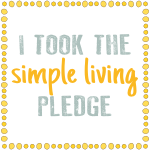When I started this blog I was sick & couch–bound. I hoped to loosely chronicle my slow ascent to better health. Well, I am officially pronouncing it a success! Yes I’m doing much better; most of it because I’m making better choices & have learned the rules for being the “new me”. Had I continued to live the same way, I suspect my outcome would’ve been much less impressive.
One of my biggest choices was how to continue working & maintaining my independent life. The prospect of living on disability, for me, was a worst-case scenario and I could NOT wrap my head around it. Realistically chronic illness creates bad days/weeks/months where I feel like hell and there’s no way around it. Soooo, I concluded that most times being at work didn’t make me feel worse & sometimes it even made me feel better. Plus, it’s better to try than not. At that point I realized I had to tweak & clarify what REALLY worked, accept that my life has changed FOREVER, then find a way to make it work. GAME ON!
Towards that end, I worked part-time and spent a number of years streamlining my health management routine-such as it has become. I’m officially a high maintenance health gal and frankly, the whole process makes me yearn to poke my own eyeball out with a fork. Yeah–it’s that much fun. However, the alternative is even less desirable, so I’m on board!
Thus began years of picking & choosing, trialing & erroring, trying & failing, wishing & whining; a quest to find what works without feeling like I’m suffering, missing out or deprived. I’ve kept food diaries, symptom diaries, pain diaries, vital signs diaries, feelings diaries, calendars, day planners, medi-planners, appointment planners, project planners…. You know what I realized?? I still did whatever I wanted or felt like. (Sez the cranky old lady who preaches accountability and responsibility all the time…..) Most of them were only mildly helpful since I kept opting to forget to use the information I learned about me. I think I have a post on DENIAL somewhere… Finally, I figured out (admitted) I actually had to USE the information I discovered….
Anyway, I have been able to implement a few (basic) key things most of the time and a few more some of the time. I can tell it’s been helpful and my health world has improved. I wouldn’t say I’ve been wildly successful since some of the more important efforts have been epic fails, but I’ve MORE than scratched the surface. Here are some of the things I’ve done/learned that have made a great difference:
1. I say “NO”. Lesson: When you say ‘no’ to something, it means you’re saying “YES” to something else. You are not required to explain to anyone why. If the recipient of said “no” feels that “why” matters, stick by your guns. It’s THEIR boundary issue, not yours. Let’em stew.
2. I get enough sleep. It’s ok to take a nap if you need to. See #1 if required.
3. I always carry a couple of durable, healthy snacks in my bag/car so I’ll remember to eat them instead of a donut at least half of the time. DO NOT leave an apple in the glove box from February ’til May ~OR~ put a ripe banana in a tote bag….Just keepin’ it real….
4. I take my medicine like I’m supposed to and I don’t get dramatic about side effects. Drama is the enemy in all things. Remember–Your Dr. is NOT trying to kill you. Side effects are expected; that’s why they’re listed on the information we’re given at the pharmacy. Many of them pass with time. If the side effects are insurmountable, talk to your health professional INSTEAD of talking about them behind their back. IF every medication has (in your mind) side effects which aren’t tolerable, then you haven’t been sick enough yet. Keep NOT taking care of yourself; soon the side effects won’t seem so crappy. Communication is the single greatest FAIL in health care today and I see a lot of patients dropping the ball. Rant over.
5. I try to manage the options within my control. I resolved to stretch/exercise four days a week. I actually do it only 2-3 days a week. I feel better though and I feel best when I stick with my resolution. Without it, I lose strength & lean muscle at the speed of light. (Not to mention my ass hastens its quest southward) My attitude also starts circling the drain-if you know what I mean… Our bodies truly are “use it or lose it” mechanisms. No way around it and no pill and no amount of complaining will fix it.
6. If I eat foods with ingredients I can’t pronounce, I’ll feel like words I shouldn’t say…..
7. I always take a multi-vitamin. Really.
8. I think and plan ahead. If I know my medications cost a lot of money every month, I don’t act like it’s a surprise every time they roll around. If you’re struggling with med costs, check out www.needymeds.org Sometimes it’s a sacrifice but a $50 prescription is better than a $10,000 hospital stay….
9. I take care of myself in general. Keeping a basic daily routine makes a difference. So does keeping some sort of log or diary. Putting on a little makeup helps. De-cluttering areas that cause me stress REALLY helps. If I only have five minutes to spend, I can make a difference in my life, my surroundings and how I feel about them.
10. When I have setbacks or get discouraged, I remind myself of the progress I’ve made ~AND~ that my process remains a work in progress.































































Recent Comments